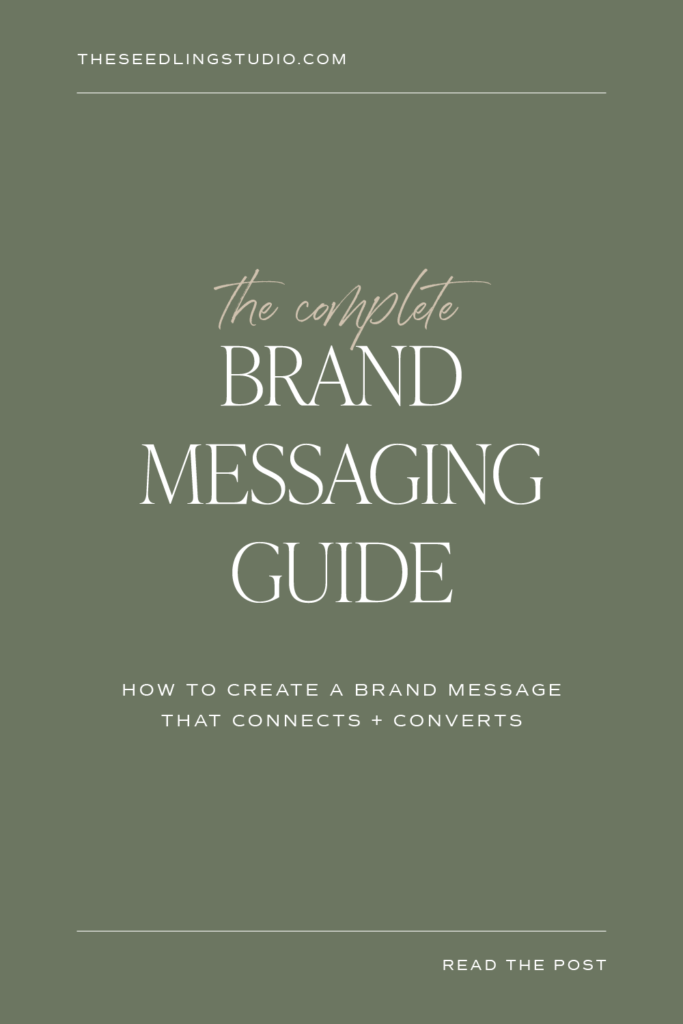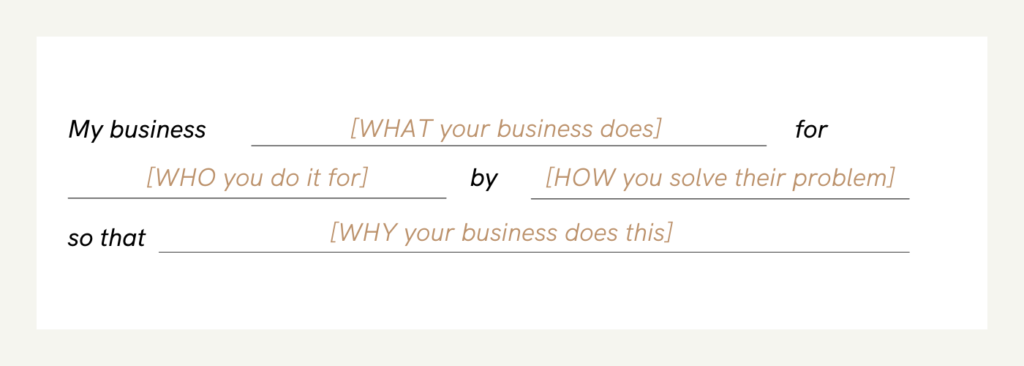When you sit down to write a piece of content for your business – whether it’s a blog post, a page on your website, or a social media caption – how long do you stare at your keyboard before you start typing? For most people, the answer is way too long. Part of the reason for this is that you don’t have a brand messaging guide.
You probably know by now that creating content is one of the most important aspects of your business’s marketing strategy. Poor writing costs businesses tons of money! But, if you’re like most business owners and entrepreneurs, you dread having to face that blank page and blinking cursor.
That’s why you need a brand messaging guide – a set of standards that help inform every piece of content you write.

How to Create the Perfect Brand Messaging Guide for Better Content
Having a guide in place before you start writing will help melt away the writer’s block and allow you to speak to your audience from a place of clarity and conviction. Who doesn’t want that?!
In this post, I’ll be covering exactly how to create your own brand messaging guide. Ready to get your words flowing in a way that connects and converts your ideal clients?
01. Define your business’s “why”
The first step in creating your Brand Messaging Guide is to be able to articulate your “why”. Why is it that your business exists?
Now, this isn’t meant to be a soul-searching exercise that takes you months and prevents you from taking action on your ideas! You can certainly take this exercise as deep as you want to, but try not to agonize or overthink it.
Even successful businesses that seem more surface-level have a strong “why”. Let’s say you own a coffee company. Maybe your “why” is that you want to bring ethical, fair-trade coffee production into the mainstream by making it more affordable. Or maybe you want to create a cozy coffee house where people can come to connect – your “why” could be to facilitate more face-to-face conversations.
If you’re having trouble, think in terms of the problem you’re attempting to solve. What problem does your business address for your clients or for the world?
People buy solutions to their problems. Understanding how your business fulfills a real need will help inform all the content you create to promote it. You’ll be able to continually point people back to the core reason your offer has value for them.
Action Step: Write out your business’s “why.”
02. Understand who your business serves
After you’ve got a handle on why your business or organization exists in the first place, the next step is to define who you serve. Who benefits from what you’re creating?
Oftentimes, business owners make the mistake of thinking their ideal audience is, well, everyone. They don’t want to limit the size of their potential pool of customers, so they try to create a message that will resonate with every person who comes across their brand.
The problem? This never works.
You’ve probably heard it before, but it needs to be said: If you’re speaking to everyone, you’re speaking to no one. The reality is, it’s crowded out there! And while you don’t have to have a perfectly clear picture of your ideal customer, what she’s wearing, and what she ate for breakfast this morning, you do need a ballpark idea of who it is that needs what you’re selling.
You already know the problem your business solves – now think: Who identifies with this problem the most?
Going back to our coffee business example, you’ll notice that different coffee companies have different types of customers. Starbucks’ ideal client cares more about convenience, while patrons of places like Blue Bottle Coffee care more about the origins and flavor profiles of their cup of joe.
After defining who your business is for, it may be helpful to also define who your business is not for. This will help you zero in on the people you most want to connect with.
Then, once you’ve defined your target audience, it’s a good idea to start spending time where they hang out. Join Facebook groups that contain members of your target audience, not for the purpose of selling to them, but to gain a better understanding of how they talk about their problems. You’ll be much better equipped to speak their language, and you’ll gain valuable insights into the types of solutions they’re looking for.
Action Step: Write down who your business serves and who it does not serve.
03. Connect their problem to your solution
Now that you know who your business serves and why, it’s time to put the pieces together into a single value statement. This is going to bring so much clarity to your business going forward!
Life Coach Natalie Bacon talks about the who-what-how method of selling – understanding who your business is for, what it actually does for them, and how it goes about doing so.
I like to take this one step further and create a statement that defines who, what, how, and why. Here’s an example that you can fill in Mad-Libs style:

Here’s our value statement for Seedling so you can get an idea of how yours might look:

Feel free to break the mold! Just be sure to include all four components. Can you see how this one statement provides the driving force behind everything you do and create?
Having this level of clarity will help inform your entire content strategy. Before you set out to create a new offer, web page, or advertisement, you’ll be able to refer back to this statement, understand exactly who you’re writing to, how your business solves a specific problem for them, and why they should choose you. How’s that for a clarity- and confidence-booster?
Action Step: Write out your very own value statement using the guide above.
04. Define your brand voice
Your brand messaging guide is almost complete!
One final important step to set up your future content creation efforts for success is to define the voice of your brand. What tone or style does your brand embody?
When defining your brand voice, you should take into consideration two important perspectives:
- What are the demographics of your target audience?
- What are your brand’s values?
The good news is, you already have these two pieces of information! They’re essentially your business’s “who” and “why.”
It’s important to consider the perspective of the person who will be reading and digesting your content, but it’s just as important to remain authentic and true to your business’s “why.”
Nowadays, people are really good at sensing when someone is being fake versus genuine. So, if you’re ever tempted to sacrifice your business’s true message and delivery style for the potential of more attention, clients, or sales, make sure you have your own back. Not everyone is going to be attracted to your brand messaging, but guess what? That’s ok! Because everyone isn’t in your target audience.
This is such a huge key to creating a business that you actually love and that accomplishes what you set out to do.
Take some time to consider how you want people to feel when they come across your content. Then, reverse engineer this feeling – what styles of writing will help produce those feelings in your readers?
As an extra note and bonus tip about your writing style, for most businesses, it helps to write as if you’re speaking to a *new* friend. This helps prevent you from being too casual and familiar in your writing, but it often inspires a tone that strikes the perfect balance between friendliness and professionalism.
Action Step: Write down three adjectives that describe your business’s style or personality. Then, write down three adjectives that describe what your business is not like. (Example: Fun but not sloppy, professional but not stuffy)
You now have a brand messaging guide that will help inform all the content you create for your business. Now, you can go forth and confidently create content that authentically represents your brand.
Got questions about establishing your brand voice or coming up with your value statement? Leave them down below, and we’ll be sure to address them!




